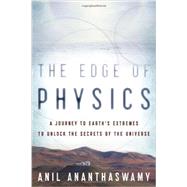
| List of Illustrations | p. viii |
| Author's Note | p. ix |
| Prologue | p. 1 |
| Monks and Astronomers | p. 9 |
| The Experiment That Detects Nothing | p. 31 |
| Little Neutral Ones | p. 56 |
| The Paranal Light Quartet | p. 81 |
| Fire, Rock, and Ice | p. 109 |
| Three Thousand Eyes in the Karoo | p. 135 |
| Antimatter over Antarctica | p. 168 |
| Einstein Meets Quantum Physics at the South Pole | p. 194 |
| The Heart of the Matter | p. 222 |
| Whispers from Other Universes | p. 248 |
| Epilogue | p. 273 |
| The Standard Model of Particle Physics | p. 283 |
| From the Big Bang to Now: The Standard Model of Cosmology | p. 285 |
| Notes | p. 287 |
| Bibliography | p. 293 |
| Acknowledgments | p. 298 |
| Index | p. 301 |
| Table of Contents provided by Ingram. All Rights Reserved. |
The New copy of this book will include any supplemental materials advertised. Please check the title of the book to determine if it should include any access cards, study guides, lab manuals, CDs, etc.
The Used, Rental and eBook copies of this book are not guaranteed to include any supplemental materials. Typically, only the book itself is included. This is true even if the title states it includes any access cards, study guides, lab manuals, CDs, etc.